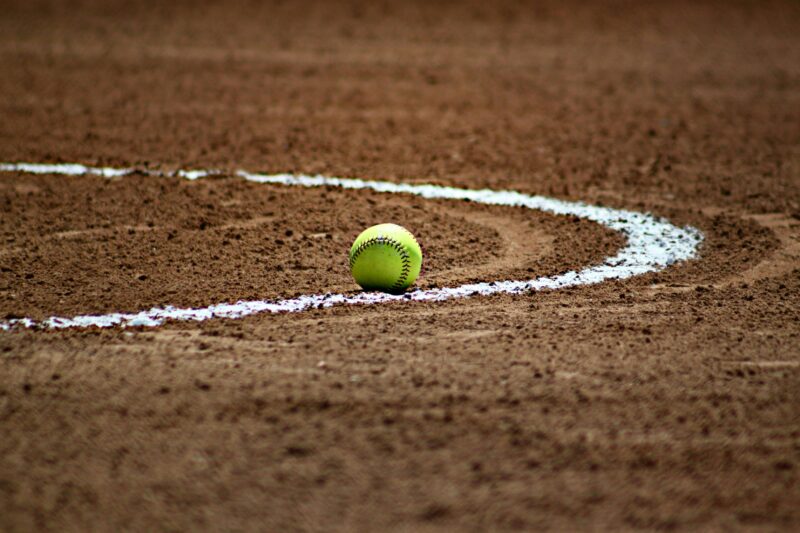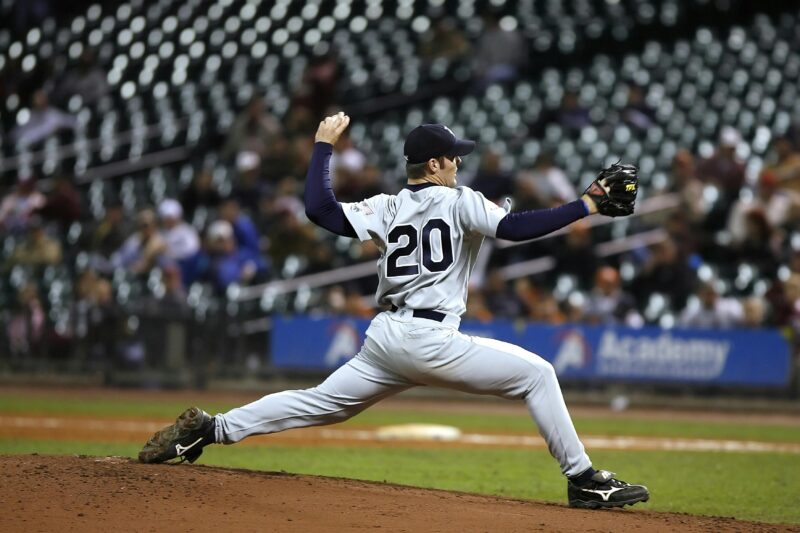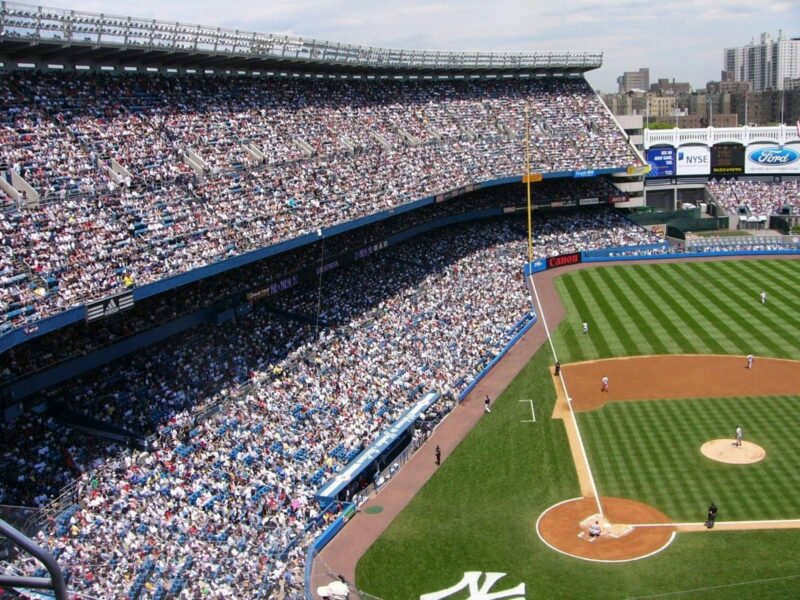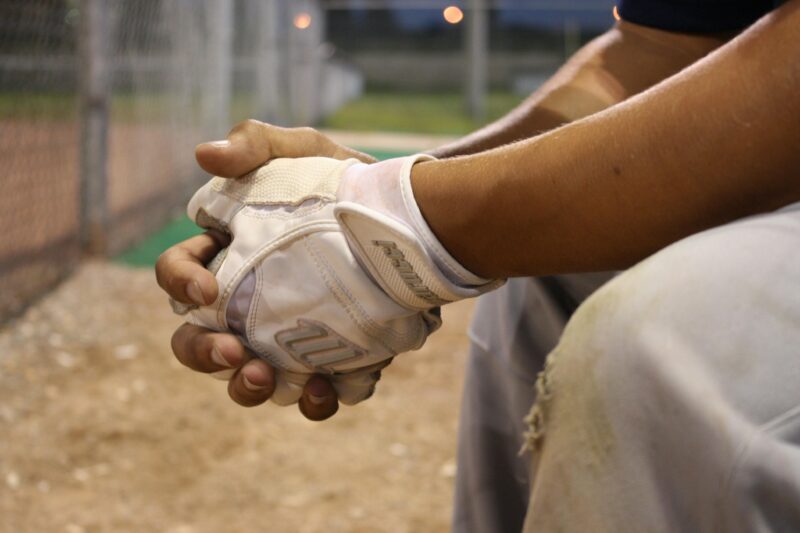The MLB free agency period is the time in which players go from one team to another. The Yankees have agreed to a deal with Giancarlo Stanton while other teams like the Phillies and Dodgers are hoping to sign Bryce Harper, Manny Machado, or Josh Donaldson. This period also determines how much each player will be worth over their next contract because these deals can vary significantly depending on when they signed it.
When Does MLB Free Agency End
The “when does mlb free agency end” is a question that has been asked a lot recently. The MLB free agency will end on November 1st, and the World Series starts on October 24th.
It’s not so awful if we conceive of the lockout that has mostly shut down baseball’s offseason as a Christmas vacation, right?
The transaction wire was vibrating for a couple of weeks at the end of November and into the first day of December. Then there was nothing. The positive is that, with 40-man rosters in hibernation, we’ll have plenty of time to dissect what’s transpired so far and advise what needs to happen once baseball’s machinery gets back up and running. It’s the equivalent of giving out midterm grades.
We’re giving out those ratings for today’s stock watch based on one criterion: how much have each team’s odds of winning a pennant in 2022 altered since the offseason began? Using this criteria results in some unusual ranks, but it’s nice to shake things up once and again.
 The aggressors are the ones who do the best. The clubs who do the poorest are those that have primarily sat on their hands throughout the summer. A team’s pennant chances improve when they acquire a good player, but those chances must come from someone else’s bucket. As a result, a talented club (such as the Dodgers) that hasn’t done anything will see their chances dwindle.
The aggressors are the ones who do the best. The clubs who do the poorest are those that have primarily sat on their hands throughout the summer. A team’s pennant chances improve when they acquire a good player, but those chances must come from someone else’s bucket. As a result, a talented club (such as the Dodgers) that hasn’t done anything will see their chances dwindle.
Above all, keep in mind that these are just snippets of the offseason, not the last word. When the lockout expires, every club will have time to mend what is wrong while simultaneously breaking what has been corrected.
Data
A on the midterm. 472 starting pennants (out of 10,000 simulations ran Nov. 4) | 1,778 current pennants (out of 10,000 simulations run Dec. 2) Wins baseline: 94.3 | Change: 1,306 pennants
What’s changed: The Mets have won the offseason so far by splashing large bucks on free agents like Mark Canha, Eduardo Escobar, and Starling Marte. Also, by adding Max Scherzer to combine with Jacob deGrom, New York has formed a Hall of Fame one-two rotation punch. The Mets’ odds of winning the World Series have grown by more than 3 1/2 times as a result of all of this.
What’s left to do: The Mets need to add pitching depth, as the projected rotation has a lot of injury history. New York must also determine what role, if any, Robinson Cano, 39, will play when he returns from a PED ban in 2022.
Data 2
A on the midterm. Change: 303 | Wins baseline: 91.7 | Beginning pennants: 888 | Current pennants: 1,191
What’s changed: Kevin Gausman was not included in the Blue Jays’ first rotation. It now does. Yimi Garcia, a key bullpen arm, was also acquired by the Jays.
What’s left to do: From here, it’s all gravy. Toronto, like every other club, needs pitching depth, especially in the rotation. Some may consider a closer as necessary, but I think Jordan Romano is just good in that capacity. Mostly, Toronto can keep probing the top of the remaining free-agent list for that one more splash that will send them over the top in the AL East’s difficult division.
• The initial victory prognosis for each team was calculated for two dates. The first occurred on Nov. 4, just after the World Series concluded and qualified players were available for free agency, but before most contract choices (player, club, or mutual) had been resolved. The other day was Dec. 2, the first day of the lockout, when everything came to a halt.
• The win forecasts are based on three factors: Steamer player projections, FanGraphs projection-based WAR estimates, and betting markets.
• After feeding the original win projections into my Monte Carlo simulator, 10,000 simulations of the 2022 schedule were conducted, yielding baseline win totals and playoff odds.
• From the start of the offseason through the start of the lockout, teams were assessed on the number of pennants they won in the simulations. The grades were issued objectively rather than subjectively using standard scores.
• The simulations anticipated that the playoff structure would stay intact from 2021, although this is likely to alter during the owners’ and players’ discussions.
Data 3
A on the midterm. 2,308 first pennants | 2,531 current pennants Wins baseline: 96.9 | Change: 223
 What’s different now: The Astros have signed high-leverage reliever Hector Neris, but this rating is predicated mostly on the return to the rotation of Justin Verlander following a short stint on the free-agent market. That agreement had been strangely stalled until Monday, when MLB finally authorized it. It’s difficult to think of Verlander as an outside acquisition since he was on Houston’s disabled list throughout the team’s journey to the World Series in 2021. In essence, it is, and it will be one of the most significant developments of the offseason if Verlander returns to his pre-injury level of production.
What’s different now: The Astros have signed high-leverage reliever Hector Neris, but this rating is predicated mostly on the return to the rotation of Justin Verlander following a short stint on the free-agent market. That agreement had been strangely stalled until Monday, when MLB finally authorized it. It’s difficult to think of Verlander as an outside acquisition since he was on Houston’s disabled list throughout the team’s journey to the World Series in 2021. In essence, it is, and it will be one of the most significant developments of the offseason if Verlander returns to his pre-injury level of production.
The only thing left to do is deal with the shortstop position. While getting Carlos Correa back seems to be a long shot at the moment, something must be done. Even if the Astros feel prospect Jeremy Pena is ready to take over the daily duty at shortstop, this is true. In case it doesn’t work out, they’ll need seasoned backup.
Data 4
B+ on the midterm. 238 original pennants | 350 current pennants Wins baseline: 84.3 | Change: 112
What’s changed: The Angels have acquired starters Noah Syndergaard and Michael Lorenzen, as well as relievers Aaron Loup and Raisel Iglesias, to their pitching staff. Iglesias was a free agent for the Angels, but his return is significant because he was easily the best reliever on the market.
The only thing left to do is add more pitching. They have more than they believe they need. The Angels have made progress, but their victory total remains mediocre.
Data 5
Midterm grade: B+ Pennants at the start: 1,363 | Pennants at the end: 1,472 Change: 109 | Wins baseline: 93.7
What has changed: Not much has changed. Keep in mind that the first simulations were based on rosters with players on expiring contracts, meaning the Braves’ roster already had Freddie Freeman, Jorge Soler, and others gone. They signed Kirby Yates, who isn’t expected to contribute to the Braves until the second half of the 2022 season, or perhaps 2023 if his recovery from surgery is delayed. Manny Pina, a competent second catcher, was signed. Even yet, the champions have essentially been spinning their wheels. They improved their pennant prospects thanks to a minor increase in betting markets. The most plausible reason is that Marcell Ozuna now looks to have a chance to play a full season in 2022, which was still in question at the conclusion of the World Series.
What’s left to do: First and foremost, they need to re-sign Freeman. Are the Braves interested in bringing Ozuna back? If not, will they be able to find someone to take him in?
Data 6
Beginning pennants: 256 | Current pennants: 330 Midterm grade: B- Wins baseline: 83.8 | Change: 74
What’s changed: St. Louis has signed starter Steven Matz, who gives the rotation some stability. T.J. McFarland, a free agent reliever, was also welcomed back by the Cardinals. That’s enough to raise St. Louis’ prospects in a division where the stakes aren’t very high.
What’s left to do: By strengthening at shortstop and signing another impact starting pitcher, the Cardinals may truly position themselves in their NL Central duel with the Brewers. The former might be done with a high-profile free-agent signing, while the latter may need a trade.
Data 7
C+ on the midterm. 468 | 420 | 420 | 420 | 420 | 420 | 420 | 420 | 420 | 420 | 420 | 420 | Alteration: 48 | Baseline wins: 86.1
What’s changed: A few clubs, such as the Rays, Giants, and Brewers, may receive a boost if we made a change based on continuous organizational overachievement. Because the Rays have a large pool of young talent in their system, they have been more aggressive traders than other clubs in order to generate roster flexibility. They did sign Corey Kluber, an experienced starter, and Brooks Raley, a reliever.
What’s left to do: The Rays don’t have to move franchise mainstay Kevin Kiermaier this offseason, but with a number of competing clubs in need of center field assistance, it could be the appropriate time. Aside from that, the Rays could look for a DH type with a power bat to take Nelson Cruz’s place during the final months of the 2021 season. Maybe they’ll simply bring Cruz back.
Data 8
C+ on the midterm. 22 initial pennants | 51 current pennants Wins baseline: 74.9 | Change: 29
What’s changed: Based on their record in tight games last year and how much they outperformed their predicted record based on run differential, the Mariners have a lot of warning lights for regression. This is reflected in their victory percentage. By acquiring Adam Frazier in a trade and signing reigning AL Cy Young Award winner Robbie Ray, they have more than increased their pennant odds.
What’s left to do: If the Mariners want to compete in the near future, they’ll need to be proactive in their search for another impact hitter. They could put someone in almost any position, even DH. A high-end signing like Kris Bryant or a more short-term candidate like Cruz should be among the options. And there’ll be more beginning pitching.
Data 9
C on the midterm. 0 | 20 | 0 | 0 | 0 | 0 | 0 | 0 | 0 | 0 | 0 | 0 | Wins baseline: 73.7 | Change: 20
 What’s changed: We’re now starting our trudge through teams who have improved their prospects but haven’t quite reached the point where they seem to be contenders right now on paper. With the additions of Corey Seager, Marcus Semien, Kole Calhoun, and Jon Gray, the Rangers have spent a lot of money. As a result, their three-word forecast for 2022 has been raised from “absolutely no possibility” to “you never know.” Nonetheless, they are long-term investments.
What’s changed: We’re now starting our trudge through teams who have improved their prospects but haven’t quite reached the point where they seem to be contenders right now on paper. With the additions of Corey Seager, Marcus Semien, Kole Calhoun, and Jon Gray, the Rangers have spent a lot of money. As a result, their three-word forecast for 2022 has been raised from “absolutely no possibility” to “you never know.” Nonetheless, they are long-term investments.
What’s still to do: The Rangers’ bullpen depth chart is currently one of the worst in the majors. Texas did not spend so much money to set itself up for a succession of heartbreaking late-inning defeats. The Rangers must act quickly on this.
Data 10
C on the midterm. 2 initial pennants | 14 current pennants Wins baseline: 73.0 | Change: 12
What’s different now: The Tigers are among the teams whose end-of-season records were poor predictors of their future prospects, with the Giants and Mariners also falling into that category. Despite this, or maybe because of it, the Tigers have been active in the offseason, signing shortstop Javier Baez and starting pitcher Eduardo Rodriguez. It’s a start, however.
What’s left to do: The Tigers’ best hope for speedy advancement is related directly to their young players’ development. With that in mind, they’ll need to look for role players who can fill in as fill-ins while the prospects develop. Building bullpen depth to complement the promising young rotation would be a good place to start.
Data 11
C on the midterm. 20 first pennants | 30 current pennants Wins baseline: 74.5 | Change: 10
What’s changed: So far, the Marlins have focused on position player additions. Avisail Garcia, a free agent, was signed to a four-year contract. Joey Wendle, an unappreciated utility player, was acquired in a trade. They also switched catchers, obtaining Gold Glover Jacob Stallings from Pittsburgh while trading Jorge Alfaro.
What’s left to do: Once the lockout is over, we should know if the National League will adopt the designated hitter as predicted. When that occurs, Miami needs to sign a power hitter, either for that new role or to play first base and push Jesus Aguilar to the designated hitter position. The Marlins will also need relievers to back up a dynamic combination of young starting pitchers who, together, provide the Marlins’ greatest potential for a breakthrough in 2022.
Data 12
C on the midterm. 21 initial pennants | 29 current pennants Wins baseline: 73.1 | Change: 8
All that has changed is the signing of reliever Taylor Clarke by the Royals.
There isn’t much left to do. The Royals’ focus in 2022 will be on optimizing the growth of their young big leaguers and those on the verge of joining them. The Royals, like the Tigers and Marlins, need to bolster their bullpen to better back their young rotation. It’s also worth looking at bringing in a seasoned starter.
Data 13
C on the midterm. 10 initial pennants | 16 current pennants Wins baseline: 76.4 | Change: 6
What’s changed: Despite their franchise-record 107 victories last season, the Giants’ win baseline has improved since the start of the summer, but projection systems and betting markets still rank them in the center of the pack. They signed multiyear contracts with three starting pitchers (Alex Cobb, Alex Wood, and Anthony DeSclafani) and brought back long-time first baseman Brandon Belt.
What’s left to do: The Giants seem to be in desperate need of one or two middle-of-the-order batters. However, their model may differ, and San Francisco proved last year that their model is much superior than mine.
Data 14
C on the midterm. Pennants at the start: 47 | Current pennants: 50 Wins baseline: 76.0 | Change: 3
What’s changed: After so many bad seasons among their players in 2021, the Twins were expected to improve on paper even with virtually little roster turnover due to statistical regression. This is represented in a wins baseline that is more in the center of the pack than in the bottom half. Minnesota added free-agent starter Dylan Bundy to a rotation that had previously been mostly bereft of major-league experience.
The only thing left to do is bring in more seasoned starting pitchers. There were a lot of them.
Data 15
Midterm grade: C Initial pennants: 1 | Current pennants: 3 Change: 2 | Winning percentage baseline: 66.0
 What’s changed: The Pirates have sought senior role players who can offer immediate roster stability as well as potential trade value in the middle of the season. After Pittsburgh traded Stallings, free-agent catcher Roberto Perez will take over as the starting catcher. Jose Quintana adds to the pitching staff’s experience. Yoshi Tsutsugo, meantime, is a much-needed corner position hitter.
What’s changed: The Pirates have sought senior role players who can offer immediate roster stability as well as potential trade value in the middle of the season. After Pittsburgh traded Stallings, free-agent catcher Roberto Perez will take over as the starting catcher. Jose Quintana adds to the pitching staff’s experience. Yoshi Tsutsugo, meantime, is a much-needed corner position hitter.
What’s left to do is repeat the process.
Data 16
C on the midterm. 2 initial pennants | 2 current pennants Wins baseline: 66.1 | Change: 0
What’s changed: One of the most stunning happenings of the early offseason was the signing of veteran closer Mark Melancon by the Diamondbacks. In a deal with Tampa Bay, they also got outfielder Jordan Luplow.
What’s left to do: If Arizona wants to return to relevance after a 110-loss collapse in 2021, it’ll have to add power to a lineup that doesn’t have much right now. If a longer-term fix is needed, the Diamondbacks will have to sort through offers for Ketel Marte, one of the most enticing trade possibilities in baseball.
Data 17
C on the midterm. – Number of beginning pennants: 2 | Number of current pennants: 1 Wins baseline: 65.2 | Change: -1
What’s changed: The Rockies have remained mostly same since the offseason started, with the exception of some contract negotiations with their own players.
What’s left to do is choose a path. The Rockies’ offensive prospects are bleak, and they are unlikely to make the playoffs. But are they attempting to correct this in order to make a push in the near future? Is the goal to build a fresh foundation? It’s difficult to say right now.
Data 18
Midterm grade: C- Initial pennants: 4 | Current pennants: 0 Change: -4 | Winning percentage baseline: 64.8
What’s changed: When the offseason started, the simulator assumed the Orioles had a non-zero probability of winning a pennant, but subsequently self-corrected in the most recent run of probabilities. The Orioles signed pitcher Jordan Lyles and infielder Rougned Odor, both of whom might be traded at the end of the season if they perform well.
What’s left to do: The Orioles chose their path a long time ago, and there’s no need to abandon it now. This implies trading current worth for future value until a foundation of domestically created talent begins to solidify at the major league level. As a result, Baltimore may consider dealing experienced players like John Means and Cedric Mullins.
Data 19
C on the midterm. – Number of beginning pennants: 8 | Number of current pennants: 3 Wins baseline: 69.0 | Change: -5
What’s changed: Nothing the Cubs have done so far seems to have made a difference in what appears to be a bleak picture for 2022. Wade Miley and Marcus Stroman have been added to the rotation, while veteran catcher Yan Gomes has been signed to assist starter Willson Contreras at the bat. Unless Gomes was signed to pave the way for Contreras to be dealt.
What’s left to do: If you think of it as a one-down-25-to-go situation, signings like Stroman at the very least secure a roster spot for multiple seasons. The Cubs may continue to scout the market for multi-year veterans and other targeted additions. The issue is that Chicago has given up its basis, and its current actions resemble cement rather than bricks.
We’ve got the latest on MLB’s first lockout since 1990, as well as where things stand with free agency (which is presently stalled). Complete coverage »
• MLB Lockout FAQ: Everything You Need to Know ›
• Tracking free-agents »
Data 20
C on the midterm. – Number of starting pennants: 81 | Number of current pennants: 71 Wins baseline: 76.5 | Change: -10
 What’s changed: There’s a lot more fringe stuff now. Cleveland refused catcher Roberto Perez’s club option, making him a free agent, and things only get worse from there.
What’s changed: There’s a lot more fringe stuff now. Cleveland refused catcher Roberto Perez’s club option, making him a free agent, and things only get worse from there.
What’s left to do: Let’s face it, the Guardians aren’t going to take any dramatic measures. The pitching remains strong, with the potential to be much better. Another experienced hitter or two, ideally with strong on-base profiles, would be beneficial to Cleveland.
Data 21
C on the midterm. – Number of starting pennants: 28 | Number of current pennants: 13 Wins baseline: 71.5 | Change: -15
What’s changed: At this point in the season, there are teams who have a high rating because they were active in free agency. And you’ve got teams that are spinning their wheels because they’re stuck in the middle and haven’t done anything about it. And there are those who haven’t done anything so far and have lost ground to others who have added to their teams. What we haven’t seen yet this offseason is a club that has gone all-in on a full-fledged rebuild, dealing away excellent players in exchange for guys who may be good in the future. The Athletics seem to be the most probable club to go that path, although it’s been more of a rumor than a reality thus far. Except for a trade for Rays pitcher Brent Honeywell Jr., a former top prospect whose career has been derailed by injuries, Oakland has essentially been waiting.
What’s left to do: The degree to which tanking becomes an appealing approach is primarily determined by the collective bargaining agreement, and because Oakland has one, it’s difficult to propose what it should do. Perhaps keeping young established guys like Matt Olson and Matt Chapman will prove to be the best option.
Data 22
Midterm grade: C- Initial pennants: 22 | Current pennants: 5 Change: -17 | Winning percentage baseline: 71.4
What’s new: The Nationals have extended Alcides Escobar’s contract and signed Cesar Hernandez to a one-year free-agent deal. At this time, that is the anticipated starting middle infield for the 2022 Nationals. Who knew a year ago that this would happen?
What’s left to do: The Nationals need a couple of back-end alternatives for their rotation. Another or three high-leverage relievers would help a team avoid a long-term rebuild that would alienate franchise cornerstone Juan Soto.
Data 23
D on the midterm. 139 original pennants | 81 current pennants Wins baseline: 77.8 | Change: -58
What’s changed: Since the first set of simulations, the Reds have lost Nick Castellanos, who chose to opt out of his contract and become a free agent. (After which, you must accept or reject a qualified offer.) In addition, catcher Tucker Barnhart was moved from Cincinnati to Detroit. They haven’t done anything to replace the value that has been lost thus far.
What’s left to do: The Reds are another team rumored to be looking to cut costs, but losing Castellanos may be enough to accomplish that goal. The pitching is still outstanding, but the Reds could need a shortstop and a center fielder to help fortify the defense behind the pitchers.
Data 24
D on the midterm. – Total number of pennants: 2,813 | Total number of pennants currently in use: 2,725 Wins baseline: 97.7 | Change: -88
What’s changed: With the Yankees, we kick off a tour of strong teams that have fallen behind in the offseason but can quickly catch up once they switch to acquisition mode. Fans of all three teams have begun to get agitated, with New York fans leading the way. The Yankees have spent the majority of their time clearing roster space.
What remains is for the Yankees to bolster their starting rotation. A splash at shortstop would calm down their irritated fans. Isn’t it true that they have to shake things up at catcher?
Data 25
Beginning pennants: 335 | Current pennants: 242 | Midterm grade: D Wins baseline: 83.7 | Change: -93
What’s changed: Reliever Corey Knebel has been the Phillies’ most significant acquisition so far. The Mets’ aggressiveness in the same division has more to do with the loss of pennant hopes than with Philly’s lethargy.
What’s left to do: A lot, but the Phillies still have a strong foundation to build on. The Phillies are in desperate need of a center fielder and, preferably, a defensive shortstop improvement. A left fielder would also be beneficial, particularly if the DH is brought to the NL, since Philadelphia needs more depth in general. Finally, the Phillies’ pitching depth has to be considerably increased.
Data 26
F on the midterm. 1,126 original pennants | 981 current pennants Wins baseline: 93.1 | Change: -145
What’s different now: The Padres have added three out-of-the-box pitchers to their pitching staff in Luis Garcia, Nick Martinez, and Robert Suarez. They did, however, lose Melancon, who turned down a player option, and moved Frazier to Seattle.
What’s left to do: If the Padres’ health improves, they’ll be the club everyone said they’d be last season. However, the bullpen’s back end needs improvement.
Data 27
F on the midterm. 647 original pennants | 384 current pennants Wins baseline: 85.1 | Change: -263
 What’s changed: So far, Boston has primarily made minor changes, rejecting club options on pitchers Martin Perez and Garrett Richards and moving Hunter Renfroe to Milwaukee in exchange for an old pal, Jackie Bradley Jr.
What’s changed: So far, Boston has primarily made minor changes, rejecting club options on pitchers Martin Perez and Garrett Richards and moving Hunter Renfroe to Milwaukee in exchange for an old pal, Jackie Bradley Jr.
What’s left to do: If Kyle Schwarber isn’t re-signed, the Red Sox could use another impact hitter. It’s critical to have more starting pitching depth. A few of high-leverage relievers are also required.
Data 28
F on the midterm. 2,481 first pennants | 2,103 current pennants Wins baseline: 94.8 | Change: -378
What’s changed: According to projection algorithms, the White Sox have picked Leury Garcia over Cesar Hernandez to start at second base since the previous set of simulations. On paper, that’s a loser, albeit neither response is really correct. Kendall Graveman was signed by the White Sox to assist in the bullpen.
What’s left to do: The White Sox’s crucial number is their wins forecast, which puts them way ahead of the rest of their division. Despite how strong Chicago seems to be, the White Sox are in a good position to improve at two positions: second base and right field.
Data 29
F on the midterm. 1,395 first pennants | 1,005 current pennants Wins baseline: 90.3 | Change: -390
What’s changed: With all of the players they’ve signed to minor-league contracts, the Brewers could staff an independent league. They acquired Renfroe in exchange for Bradley Jr., apparently to compensate for the loss of Avisail Garcia.
What’s still to do: As it stands, the Brewers seem to be the favorite in the NL Central. They have a top-notch pitching staff and a solid team defense to back them up. However, if the National League adds the designated hitter, Milwaukee’s outlook could be significantly improved with an impact hitter who would not affect the fielding projection. The sort of batters that might fit include Nelson Cruz and Nick Castellanos.
Data 30
F on the midterm. 4,849 initial pennants | 4,051 current pennants Wins baseline: 104.7 | Change: -798
What’s changed: Perhaps the biggest justification for utilizing this technique for arranging teams in this stock watch is that it allows us to put the Dodgers last rather than first for the first time. To be clear, the offseason hasn’t been great thus far. On the plus side, Chris Taylor was re-signed, while Daniel Hudson and Andrew Heaney signed one-year contracts to join the pitching staff. However, it’s difficult not to think about the Dodgers’ summer without thinking of Scherzer and Seager signing elsewhere.
What’s left to do: The Dodgers normally have the luxury of being able to wait for the few guys who are genuinely excellent enough to strengthen their squad. They’re going to do it again. However, whether or not Clayton Kershaw is brought back, the Dodgers have a definite need to add to their rotation this time around. Of course, you’ve probably seen that many teams want rotation assistance, and there’s only so much beginning pitching available. As a result, when the lockout expires, L.A. must act quickly.
Watch This Video-
The “mlb free agents by team” is a feature that allows users to view which players are available on the MLB free agency market.
Related Tags
- mlb free agency mariners
- mlb free agency list
- when does mlb free agency start 2022
- mlb free agency twitter
- top 20 mlb free agents 2022

